Poco F5


The Poco F5 is another strong mid-range phone, with excellent performance for the money and a very good AMOLED display. Add in a relatively refined design, and it’s a clear improvement over the Poco F4. However, a stagnant camera system, the ever-unlovable MIUI 14, and an unwelcome price bump temper some of those encouraging elements.
Pros
- Excellent performance
- Strong AMOLED screen
- Refined (if still not exciting) design
Cons
- More expensive than before
- MIUI 14 is still hard work
- Camera remains so-so
Availability
- UKRRP: £449
- USAunavailable
- EuropeRRP: €429
Key Features
- Large 6.67-inch displayThe Poco F5’s 6.67-inch OLED display is big, bright enough, and colour-accurate – perfect for watching video content.
- Solid Snapdragon 7 Plus Gen 2 performanceCoupled with 12GB of RAM and 256GB of storage, the Poco F5 runs advanced games almost as well as a flagship phone – but for half the price.
- 67W fast charging capabilitiesWith fast charging capabilities, the Poco F5 can go from flat to 47% in just 15 minutes.
Introduction
The headline for the 2023 Poco F-series might well be the return of the Pro line after three years out, but let’s face it: more people will be eyeing up the plain Poco F5.
While the Poco F5 is even more value-focused than the Poco F5 Pro, though, it still costs £449. Not only is that an £80 bump over the Poco F4, it’s also exactly the same price as the Google Pixel 7a and the Samsung Galaxy A54.
Xiaomi has stepped up into an altogether more competitive league with its latest performance-focused mid-ranger. Does it have the chops to compete?
Design and Screen
- More refined design than before
- Slim and light
- Strong 6.67-inch AMOLED display
The Poco F5 Pro might have a number of eye-catching components, but I prefer the Poco F5’s design. Its squared-off edges, shimmering (but not shiny) back, and discrete camera module look and feel more modern and just plain premium than the Pro.

It’s a more slender device, too, at 161.1 x 75 x 7.9mm, while a much lighter weight of 181g makes it nice and pocketable. All in all, it’s a step up from the Poco F4’s design language, which felt a little more cheap and generic.
It helps that I was sent the Blue model, which has a nice shimmering tinge to it, and which fends off fingerprints reasonably well. You can also specify the Poco F5 in Black or White, with the latter in particular coming with an interesting mottled finish.
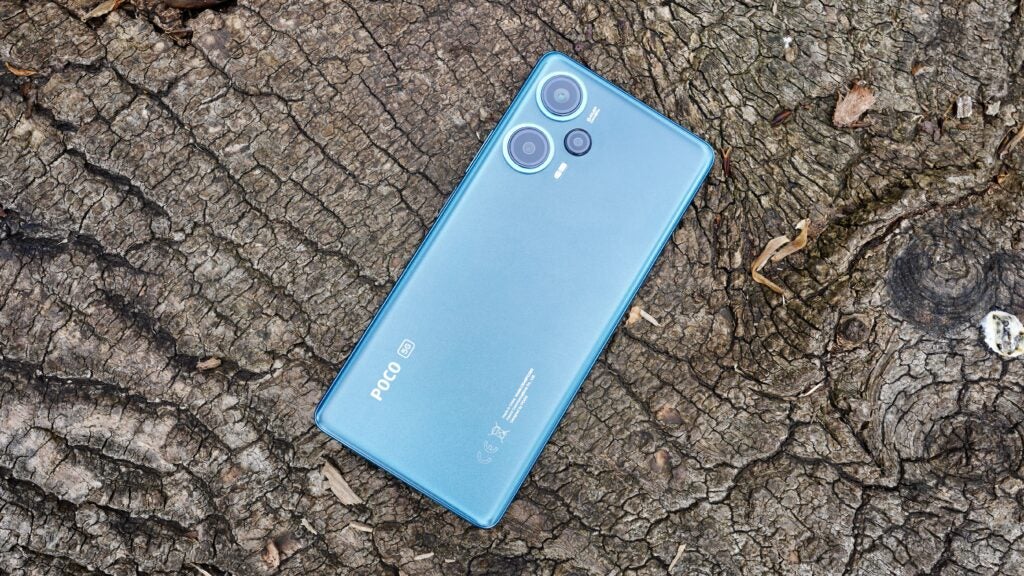
There’s a certain symmetry to the top and bottom bezels, which is always nice to see in a cheaper phone. You still only get an IP53 rating, however, which is inferior to the likes of the Pixel 7a and the Samsung Galaxy A54. There’s Gorilla Glass 5 around front, which beats the Pixel 7a’s GG3 for toughness.
As if the Poco F5’s improved design wasn’t enough, Xiaomi has also restored the 3.5mm headphones jack after skipping the feature on the Poco F4. That’s good to see, and backs up all the gaming talk from the brand. Wireless buds generally mean latency, after all.
While the design has gotten a little more refined, Xiaomi has stuck with broadly the same display set-up with the Poco F5. It’s another 6.67-inch FHD+ (1080 x 2400) AMOLED display with a 120Hz refresh rate and a 240Hz touch response rate. The peak brightness (in HBM) has been nudged up ever so slightly, from 900 nits in the Poco F4 to 1000 nits here, but there really isn’t much in it.
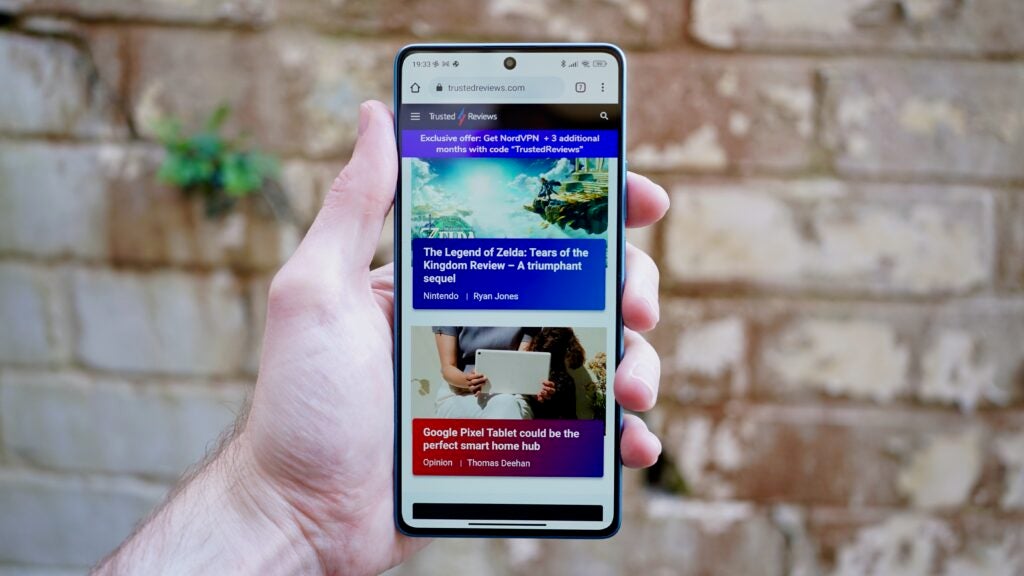
I have no complaints about the Poco F5 screen staying much the same. It’s still an agreeably big, bright, responsive, and colour-accurate panel for the money, and one that’s well suited to consuming media on the go.
One way in which it’s actually gotten a little worse, however, is with a touch sampling rate of 240Hz rather than the Poco F4’s 360Hz. For the vast majority of users, this won’t be remotely consequential. But given that Poco often courts the gaming crowd and bigs up the gaming performance of its phones, it’s not a particularly good look, at least on paper.
This screen is flanked by a set of stereo speakers, which are loud and clear, if a little lacking in nuance and bass.
Camera
- Same so-so camera system as last year
- 64MP main sensor with OIS
- 8MP ultra-wide and pointless 2MP macro
Xiaomi appears to have stuck with exactly the same triple camera system as the Poco F4. Of course, it’s also the same system as the Poco F5 Pro, which is a rather more flattering point of comparison.
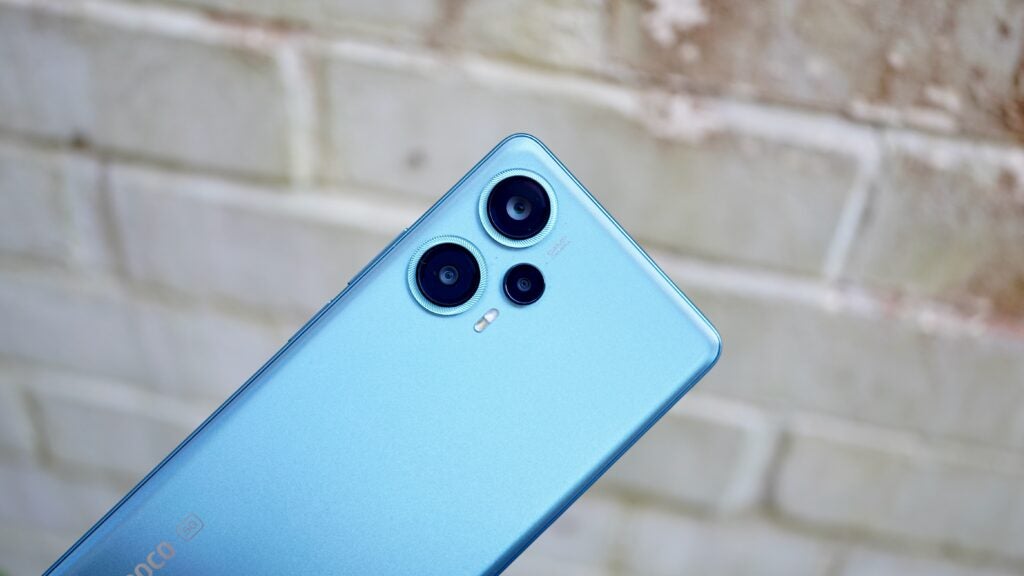
Once again there’s a rather compact 1/2in 64MP main sensor, a mediocre 8MP ultra-wide, and an inconsequential 2MP macro. OIS makes a return for that main sensor, which is good news, but again nothing new.
The main camera captures solid shots with decent detail and dynamic range, at least in strong lighting. Colours tend to be vibrant in such scenarios, without dropping too far into garish territory – at least by default.








The AI assistant is turned off by default, as seems to be the case across the wider Xiaomi range. This is a good thing, as when active it tends to punch colours up too much. Blue skies and green fields, in particular, become rather gaudy. Where it can be handy is in things such as indoors food shots, where a little extra brightness and colour is often welcome.


It also helps lift ultra-wide shots that are otherwise drab, flat, and lacking in detail, with a big drop-off at the edges. We’ve come to expect this from such mid-range set-ups, of course.



There’s no telephoto camera, so the Poco F5 crops in on the main sensor for its 2x shots. These look fine in good lighting, with the superior tone and dynamic range helping out. But there’s a certain softness that speaks to that weedy sensor and Xiaomi’s image processing working overtime to compensate.


There’s a 2MP macro camera too, but it simply doesn’t capture sufficient detail to make it at all worthwhile. The fact that macro mode is buried in the camera menu rather than readily accessible from the main camera UI suggests that Xiaomi knows this to be the case.
There’s a 16MP selfie camera around front, but it’s rather limited when it comes to detail and dynamic range. Some of the selfies I took looked bleached out, and my skin looked even sicklier than normal. Selfie portraits, meanwhile, do a competent job of distinguishing the subject, but struggle even more with overexposure.


Overall, the Poco F5’s camera is perfectly acceptable for the money, but it lags behind mid-range rivals such as the Redmi Note 12 Pro Plus and with its impressive 200MP main camera, as well as the Redmi Note 12 Pro and the OnePlus Nord 2T with their larger Sony IMX766 image sensor. Google’s Pixel 7a and Pixel 6a, of course, remain mid-range camera stars for the same or much less money respectively.
Performance
- Fast, modern Snapdragon 7 Plus Gen 2
- Capacious 12GB RAM and 256GB storage
- MIUI as cluttered as ever
Poco phones, and the Poco F-series in particular, have always been performance-focused. It’s good to see the Poco F5 sticking to its heritage and packing a highly capable Snapdragon 7 Plus Gen 2 chip.
In CPU terms, this chip actually outperforms the Snapdragon 8 Plus Gen 1 found in the Poco F5 Pro – at least according to my Geekbench tests. That’s impressive stuff.
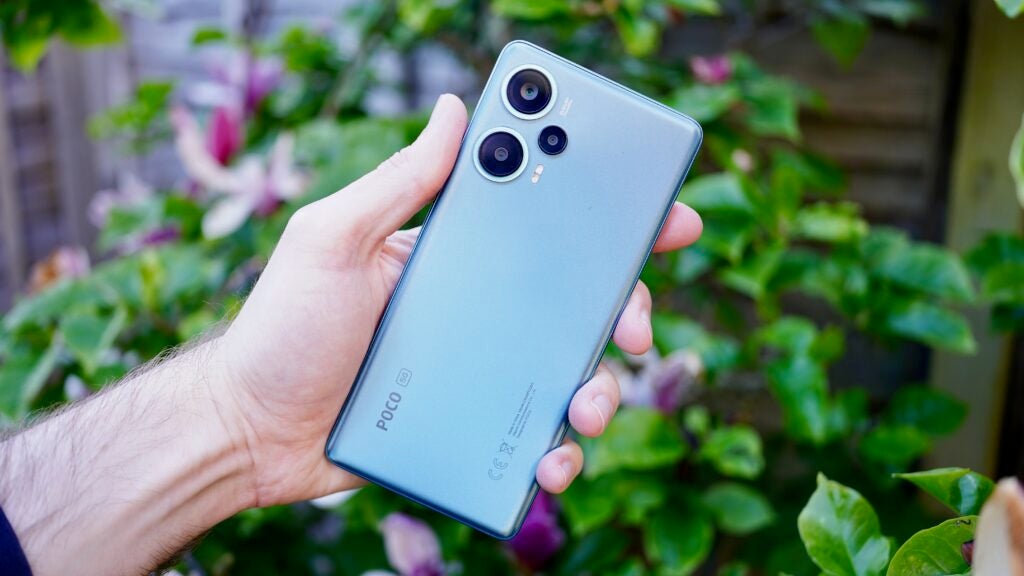
It’s a different case when it comes to the GPU results, where the Poco F5 Pro comfortably beats its little brother in like-for-like conditions. Even so, the Poco F5 is no slouch, and I was able to play Wreckfest on ramped-up settings. There was the odd stutter that suggests you might be better off slightly below the top settings, but it remained playable.
It doubtless helps that my test model came with a generous 12GB RAM, which is the only spec available in the UK. You’ll get 256GB of storage in that sole model, too, which is similarly generous. It would have been nice to have a lower-capacity option (perhaps 8GB/128GB) at a cheaper starting point, though.
And so we come to the part of the review where we mention the key weakness with most if not all Xiaomi phones: software.
You’re getting MIUI 14 layered on top of Android 13 with the Poco F5, just like with the Poco F5 Pro, not to mention the Xiaomi 13 and the Redmi Note 12 Pro. It’s no less cluttered or clumsy here.
There’s still far too much bloatware, including three web browsers, which never ceases to amaze me no matter how many times over the past few months I’ve encountered it (and Xiaomi releases a lot of phones). The UI is generally very busy and somewhat nannying with its persistent notifications.
In its defence, it’s quite a customisable UI, and you can work to minimise the annoying bits by deleting apps, installing others, and tinkering around in the Settings menu. You can switch away from that convoluted split notification menu (like iOS, but clunkier) to something more simple, set up the always-on display, adjust the notifications, and more.
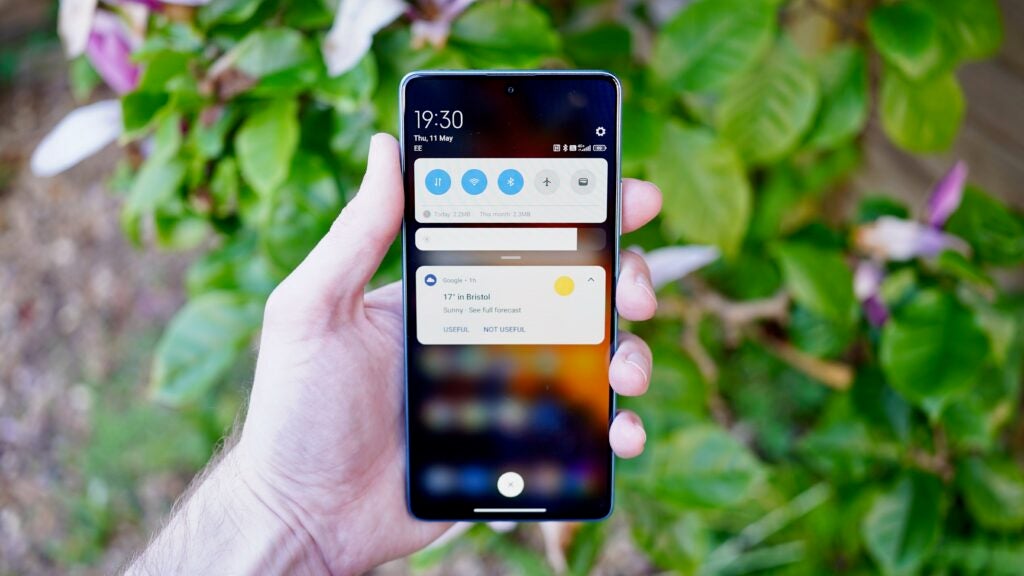
But really, you shouldn’t have to work that hard straight out of the box. Other mid-range phones, most notably the Pixel 7a and the Motorola Edge 40, don’t make you jump through so many hoops.
Battery life
- 5000mAh battery
- Two days of light usage
- 67W wired charging
Xiaomi has given the Poco F5 a 5000mAh battery, which is much larger than the Poco F4’s 4500mAh cell. Considering last year’s model was quite a bit heavier, that’s quite a feat.
Sure enough, the Poco F5 will see anyone through a full day of usage with change to spare. I was able to get through lighter days with more than 60% left, meaning this will be a genuine two-dayer for some people. For gamers and more intensive users, you can expect a full day with no worries.
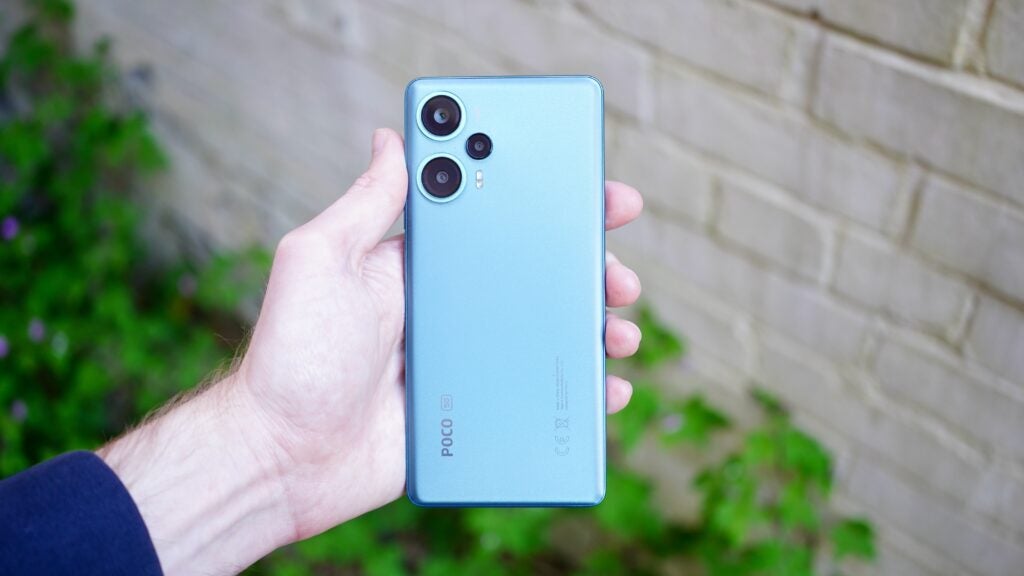
Hit it hard with media – which is kind of what the Poco brand is all about – and it’ll stand up to the challenge. An hour of 4K video streaming drained 6%, while the same video at FHD drained just 3%. Half an hour of intensive gaming on Wreckfest drained 11%, while an hour of music streaming on YouTube Music didn’t even move the dial below 100%.
The Poco F5 is a solid stamina champ, then, and it also charges up pretty quickly with 67W fast charge capabilities. In my experience, it’ll go from empty to 47% in 15 minutes, and on to 82% in 30 minutes. It hits 100% in around 52 minutes.
There are faster-charging phones for the money (the Redmi Note 12 Pro Plus with its 120W charger springs to mind), but it’s not bad at all. It’s a shame there’s no wireless charging here, however. Ordinarily, it would barely be worth a mention, but the Poco F5 Pro does include such a feature this year, as does the Pixel 7a.
Latest deals
Should you buy it?
You need a speedy, future-proof mid-ranger: With a speedy, modern Snapdragon 7 Plus Gen 2 processor, 12 GB of RAM, and 256GB of storage, the Poco F5 should feel fast and fluid for years.
Photography is a priority: The Poco F5’s main camera is fine, but you can do much better for similar or even less money.
Final Thoughts
The Poco F5 is quite clearly a better phone than the Poco F4, with impressive performance, a nicer design, and superior battery life adding to an already impressive AMOLED display.
However, some familiar drawbacks remain, including the overly busy MIUI software, a middling IP53 waterproof rating, and a camera that merely scrapes into ‘OK’ status. Now that it’s no longer a sub-£400 proposition like its predecessors, these flaws can’t be so readily overlooked.
Ultimately, like the Poco F5 Pro, the Poco F5 is something of a mid-range specialist, offering a strong media and gaming-focused experience for decent money. If your priorities lie elsewhere – flagship-level design, clean software, or a genuinely good camera, say – there are plenty of better options for similar or even less money.
More choice is good, of course, and the Poco F5 works its particular niche very well. What it isn’t, however, is that Holy Grail of a mid-range all-rounder that we can recommend to most people without caveat.
How we test
We test every mobile phone we review thoroughly. We use industry-standard tests to compare features properly and we use the phone as our main device over the review period. We’ll always tell you what we find and we never, ever, accept money to review a product.
Find out more about how we test in our ethics policy.
Used as a main phone for a week
Thorough camera testing in a variety of conditions
Tested and benchmarked using respected industry tests and real-world data
FAQs
It’ll last two days of light usage, easily.
Unfortunately not – you’ll have to cough up for the Poco F5 Pro for that.
Yes.
Trusted Reviews test data
Full specs
The post Poco F5 appeared first on Trusted Reviews.
Source Trusted Reviews ,Home Appliances Reviews


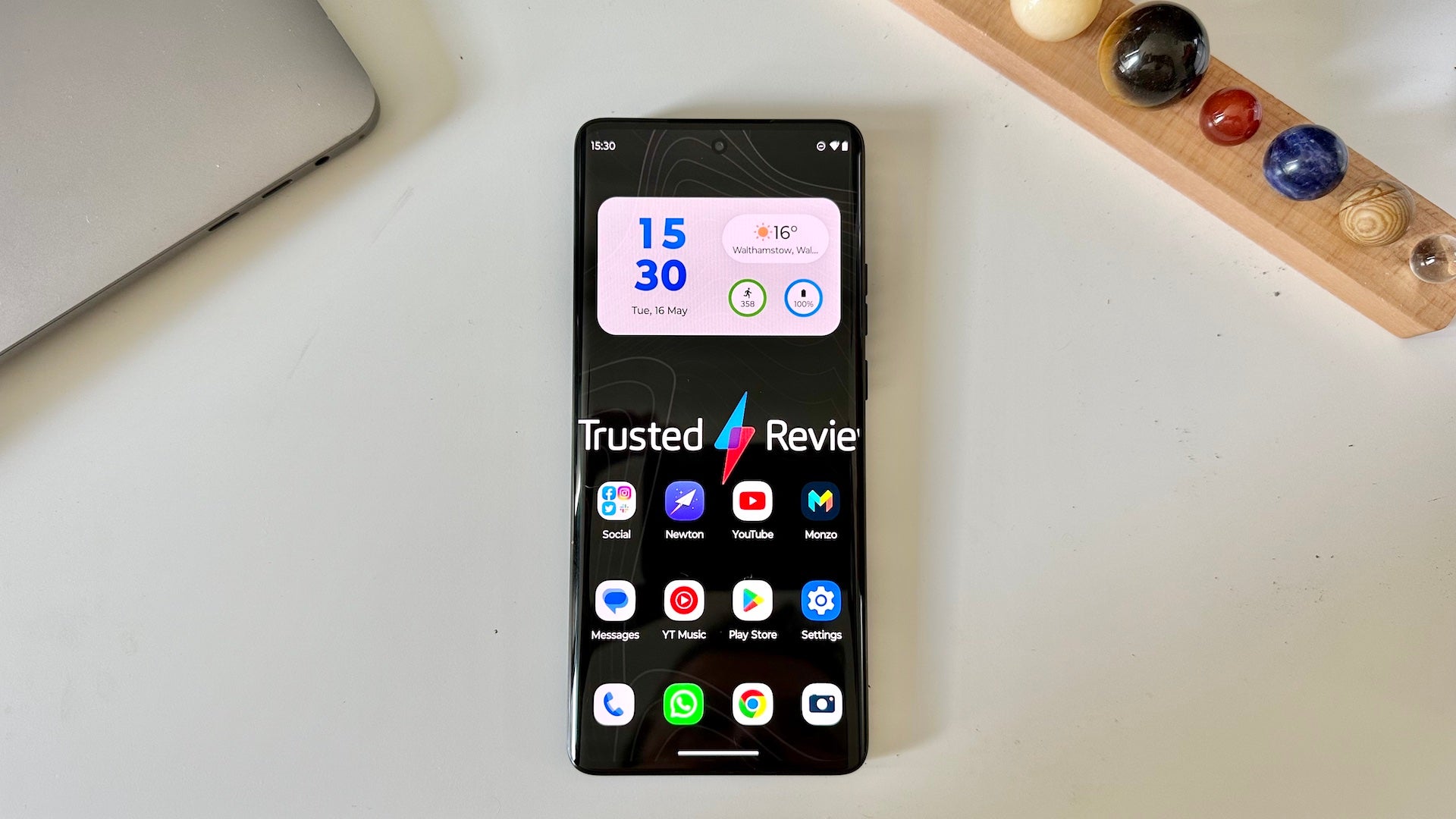
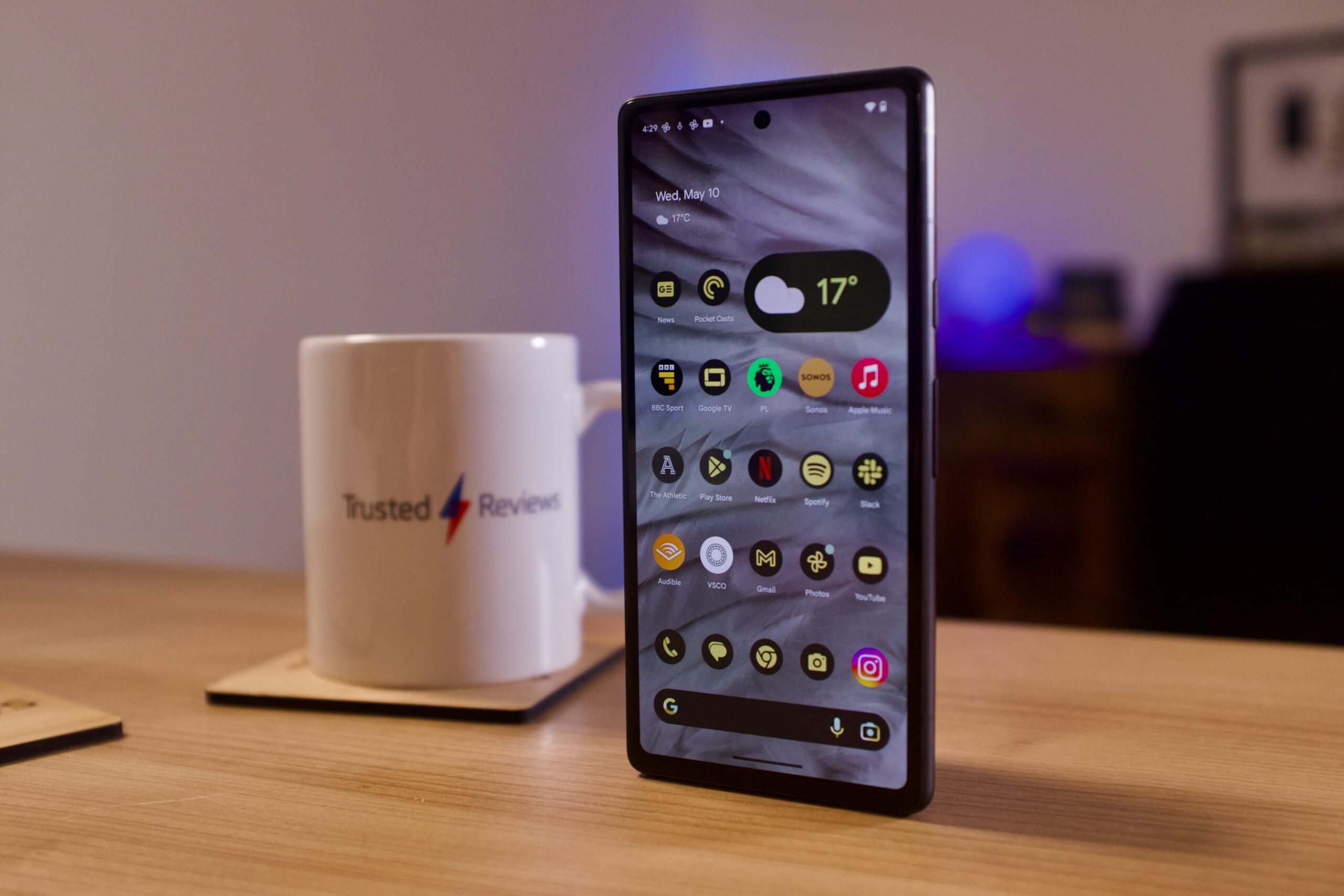
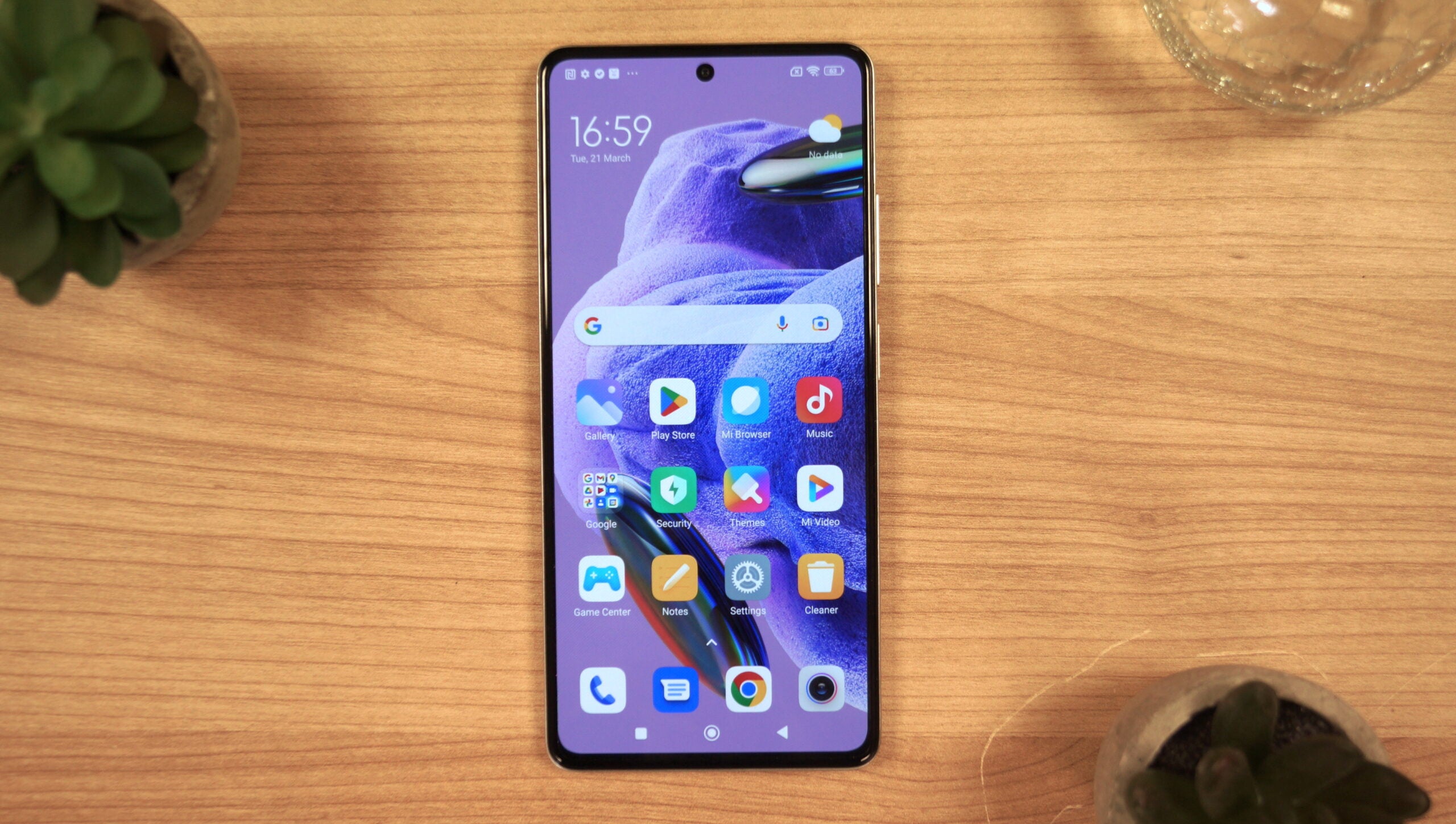
No comments